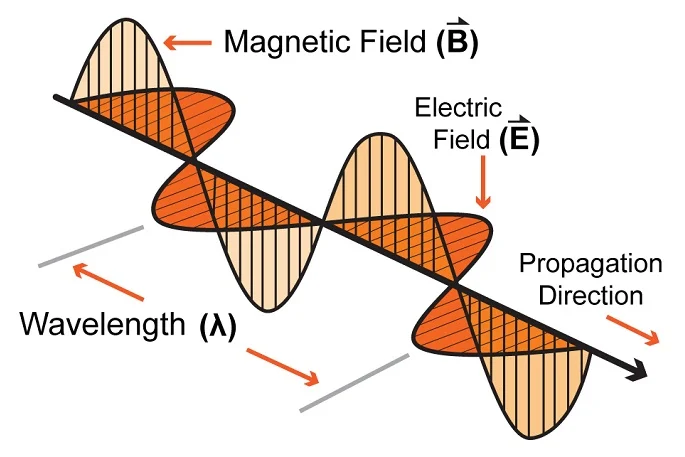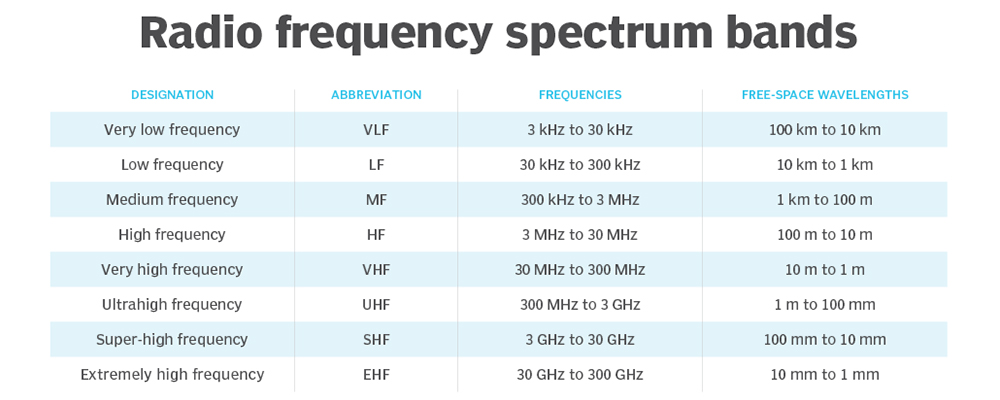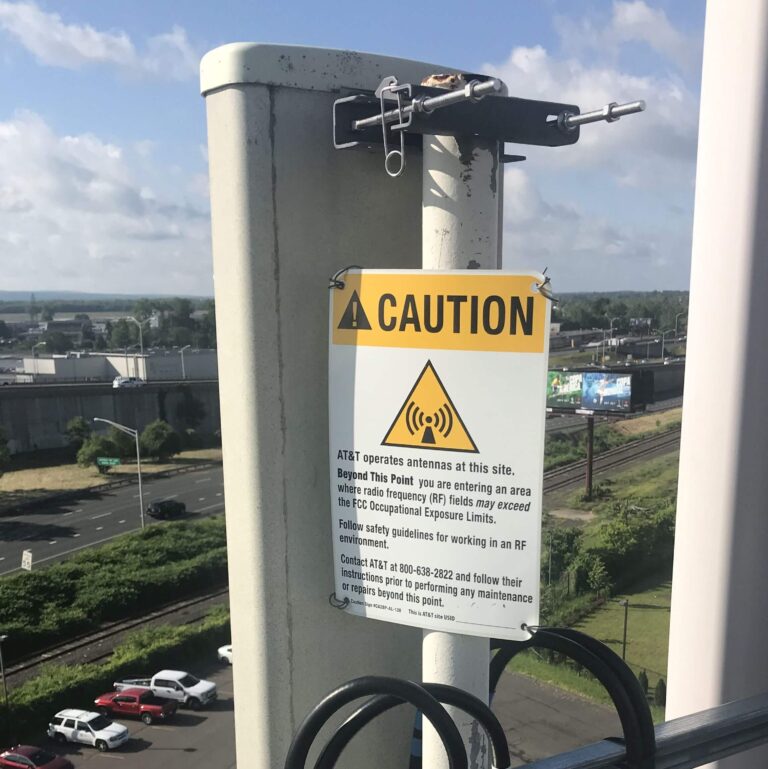What is RF?
RF stands for radio frequency. It represents the number of oscillations of a radio wave, usually measured in hertz (Hz). Different radio devices will use different frequency ranges, for example, AM broadcasting uses frequencies in the range of 520 kHz to 1610 kHz, FM broadcasting uses frequencies in the range of 87.5 MHz to 108 MHz, and cellular phones and mobile communications use frequencies in a much higher range of a few hundred MHz to a few tens of GHz.

Spectral Resources
In today’s advanced era of science and technology, communication technology has made significant progress. Whether it is making phone calls or accessing the Internet, these have become essential methods for communication, exchanging information, and obtaining knowledge in our daily lives. When we make phone calls or surf the Internet, we feel that the process of using it is very smooth, in fact, in addition to advanced equipment for us to use and a larger and wider range of signal coverage, there is also a reasonable division of the frequency band plays an important role.
In order to rationalize the use of spectrum resources and ensure that various industries and services do not interfere with each other when using spectrum resources, the ITU-R has promulgated the Radio Regulation , which provide a unified frequency range for the radio frequency bands used by various services and communication systems.
The frequency ranges of these bands may vary slightly in practical application in various countries and regions, but they must all be within the internationally specified ranges. There is also a problem of selectivity and rational allocation of frequency bands for the use of channels by various communication systems, so as to rationally utilize and conserve spectrum resources as much as possible and to meet the requirements of effective and reliable transmission.
RF Band
RF includes a range of electromagnetic frame frequencies from 30 Hz to 300 GHz. To facilitate identification, experts divide frequencies into different bands, such as low frequency (LF), medium frequency (MF), and high frequency (HF), among others.

RF Safety
Ionizing radiation, such as X-rays, gamma rays, and ultraviolet light, destroys atoms or molecules (including DNA) and is a direct cause of some forms of cancer and other health problems. Radiofrequency radiation is non-ionized and does not destroy atoms or molecules. However, RF radiation still generates heat, and high levels of RF radiation may cause skin tissue damage. However, there is no conclusive evidence that RF radiation at conventional power levels or under normal conditions poses a serious biological hazard. Nevertheless, the use of high power emitters requires caution and adherence to regulatory and industry guidelines to minimize RF radiation exposure.

Applications of RF
Information Transmission
RF technology were first used to transmit sound and image information, including radio and television broadcasts. RF also enables data transmission technologies such as Wi-Fi, cellular data and Bluetooth. Whether we are at home, at school, in a caf or in a public place, we can connect to the Internet via Wi-Fi or cellular data for online learning, social entertainment, work or shopping. None of this would be possible without the ability of RF technology to transmit data over the air. In addition, the ability to transmit information from space is critical for satellite applications, including GPS.
Heated Objects
Microwave ovens use a magnetron to generate RF signals at a frequency of about 2.5 GHz. The RF signal penetrates food and liquids, causing molecules (especially water molecules) to vibrate, which in turn generates heat. When heating food in a microwave oven, avoid placing metal objects in the oven as the metal will convert the radiation generated by the magnetron into a conducted RF signal. The electric current generated in the metal may cause sparks or fire. In addition to being used for heating leftovers, RF technology can also be used for industrial sterilization, among other things.

Radiofrequency technology also plays an important role in the medical field. Doctors use radiofrequency signals to perform radiofrequency ablation, a method of treating tumors. By directing RF signals to the affected area and generating heat to destroy the cancer cells, this non-invasive treatment has yielded favorable results in many cases. In addition, radiofrequency technology is widely used in the field of aesthetics. For example, radiofrequency stimulates collagen production and enhances skin elasticity and firmness.
Additionally, the field of cosmetology extensively utilizes radiofrequency technology. For instance, radiofrequency actively stimulates collagen production, enhances skin elasticity and firmness, and cosmetologists apply it in various procedures like wrinkle elimination, face lifting, and skin resurfacing.
Inductive Objects
Radar is a technology that uses radio frequency to sense objects. Radar is widely used in areas such as detecting airplanes and ships, measuring the speed of vehicles and the movement of sports balls. Another example of the use of radio frequency sensing is body scanners, which have largely replaced metal detectors in airports. Motion sensors in certain alarms or other systems also use RF technology. In addition to this, a lesser known use of RF sensing is material measurement. RF technology can non-destructively determine certain properties of materials, such as checking trees for rot and termite problems.
Conclusion
RF technology is the cornerstone of modern communications, information transfer and innovation. From its beginnings in radio and television broadcasting, to applications such as Wi-Fi, cellular communications and satellite navigation, RF has changed the way we access information. Whether it’s microwave cooking or medical treatment, this demonstrates its utility in a variety of fields.
With continued research and strict adherence to safety guidelines, RF technology will undoubtedly further enrich our lives, contributing to progress and innovation in a wide range of applications. From airwaves that deliver our favorite songs to life-saving medical procedures, RF technology is a testament to human ingenuity and its ability to harness the power of electromagnetic waves for the betterment of society.

